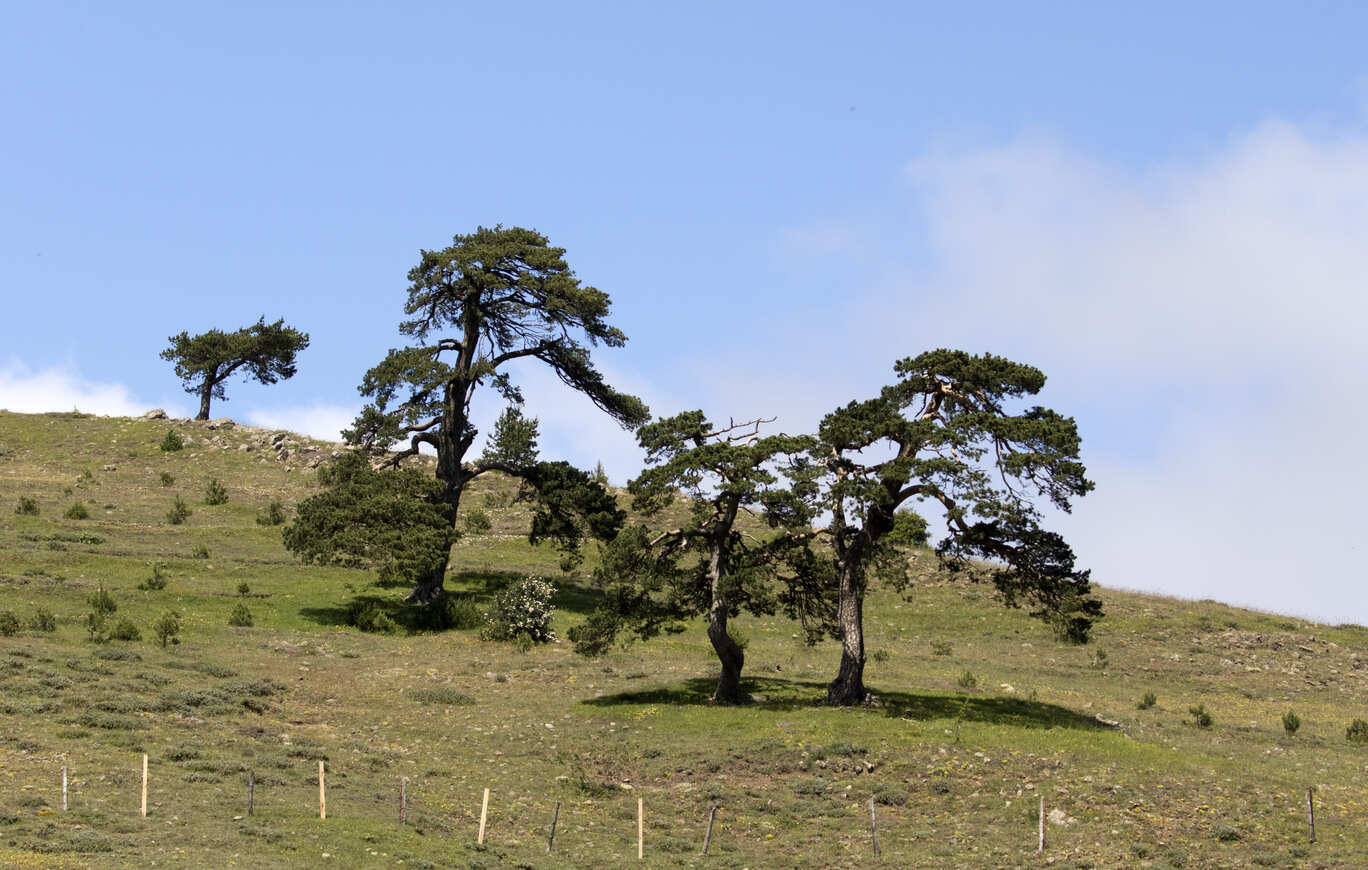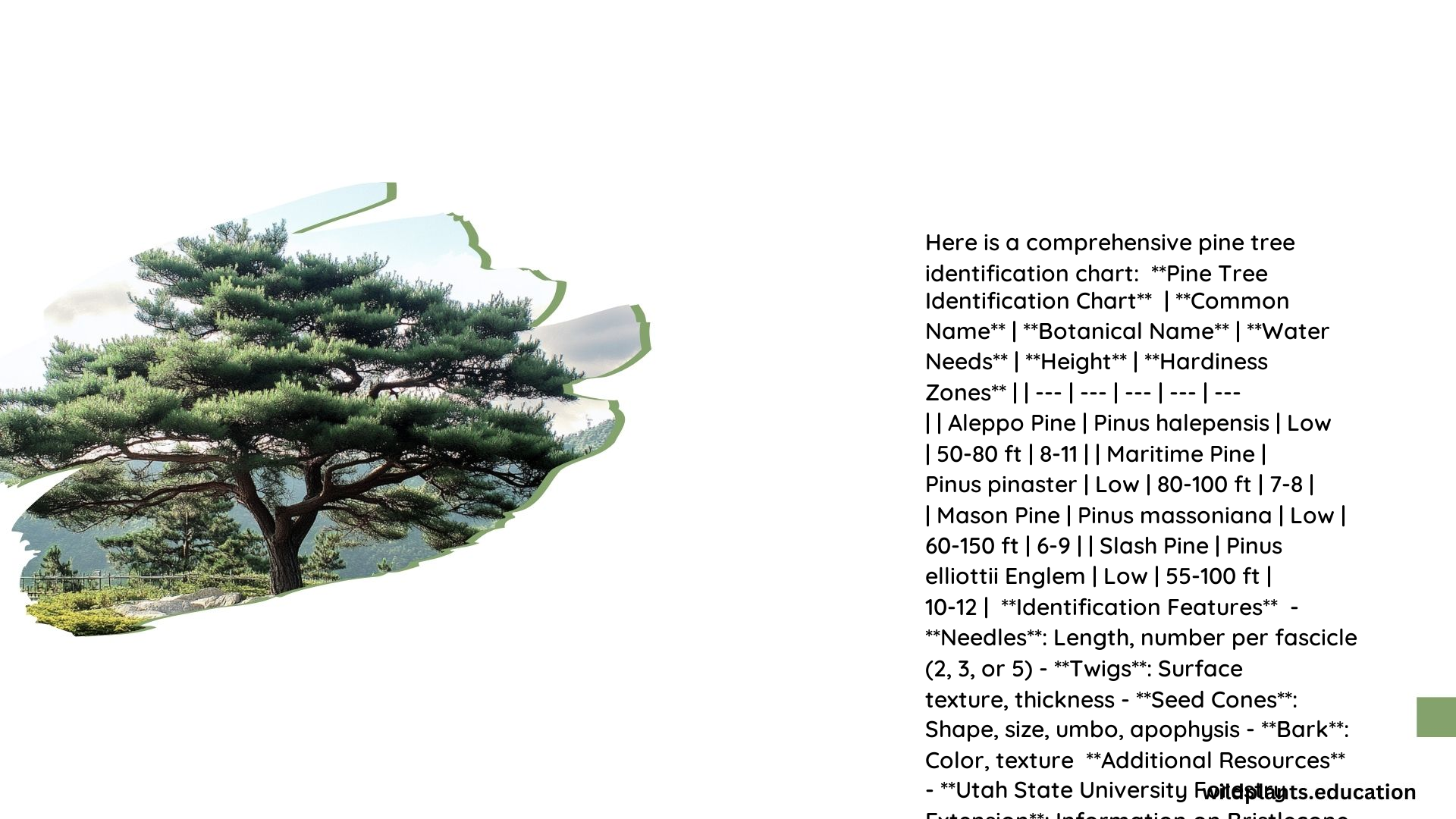This comprehensive Pine Tree Identification Chart provides a detailed overview of the key characteristics to look for when identifying different pine tree species. From needle shape and size to bark texture and cone features, this guide covers the essential details you need to accurately distinguish between common pine varieties.
What are the Key Characteristics for Pine Tree Identification?

The table below outlines the distinguishing features of several popular pine tree species:
| Species | Needle Shape | Needle Size | Bark Texture and Color | Cone Shape, Size, and Color | Growth Habit |
|---|---|---|---|---|---|
| Eastern White Pine | Soft, flexible, bluish-green | 6 inches, 5 needles per fascicle | Grayish-brown, deeply furrowed | Short stalks, drooping, cylindrical, 2 years to mature | 50-80 feet tall, 20-30 feet wide |
| Loblolly Pine | Hard, straight or slightly twisted | 3-9 inches, 3 needles per fascicle | Dark brown, often deeply furrowed | Ovate-conic, persists 3-4 years | 60-100 feet tall, 30-50 feet wide |
| Shortleaf Pine | Hard, twisted | 2.5-4.5 inches, 2 needles per fascicle | Brownish-red, flat, often short shoots on trunk | Ovate-conic, persists for years | 30-60 feet tall, 20-30 feet wide |
| Longleaf Pine | Hard, straight | 8-17 inches, 3 needles per fascicle | Brown, deeply cracked | Tapering, slightly curved, fall soon after seed drop | 60-100 feet tall, 30-50 feet wide |
| Pitch Pine | Hard, stiff | 3-5 inches, 3 needles per fascicle | Reddish-brown, deeply furrowed | Ovoid, often persistent for many years | 30-60 feet tall, 20-30 feet wide |
| Scots Pine | Hard, twisted | 1-3 inches, 2 needles per fascicle | Red, cracked | 1.5-3 inches long | 30-60 feet tall, 20-30 feet wide |
| Virginia Pine | Hard, twisted | 1.5-3 inches, 2 needles per fascicle | Dark brown, shallow fissures | Ovate-conic, throughout crown | 30-60 feet tall, 20-30 feet wide |
How to Distinguish Between Pine Tree Species?

White Pine vs. Loblolly Pine
- White pine has soft, flexible needles in fascicles of 5, while loblolly pine has hard, straight or slightly twisted needles in fascicles of 3.
- White pine cones are shorter and more cylindrical, while loblolly pine cones are longer and more ovate-conic.
- White pine bark is grayish-brown and deeply furrowed, while loblolly pine bark is dark brown and often deeply furrowed.
What are the Common Mistakes to Avoid in Pine Tree Identification?
- Misidentifying Juvenile vs. Mature Trees: Juvenile trees may have different characteristics than mature trees, such as smaller needles or smoother bark.
- Confusing Pine with Similar Conifers: Pine can be confused with spruce or fir, but pine needles grow in clusters, while spruce and fir needles are attached individually to the branch.
- Ignoring Seasonal Changes in Appearance: Pine trees may change color or drop needles seasonally, which can affect identification.
What are the Reliable Resources for Accurate Pine Tree Identification?
Field Guides
- “National Audubon Society Field Guide to Trees” by Elbert L. Little (2004)
- “The Tree Identification Book” by George W. D. Symonds (2003)
Online Databases or Websites
Local Extension Services or Botanical Gardens
- Contact your local Cooperative Extension office or botanical garden for guidance on tree identification in your area.
References:
– Cornell University. (2019). Aren’t They All Just Pines? How to ID Needle-Bearing Trees. Retrieved from https://smallfarms.cornell.edu/2019/02/arent-they-all-just-pines-how-to-id-conifer-trees/
– Clemson University. (2021). Differentiating Between Loblolly, Longleaf, and Other Southern Pines in the Woods. Retrieved from https://blogs.clemson.edu/fnr/2021/07/20/differentiating-between-loblolly-longleaf-and-other-southern-pines-in-the-woods/
– 8 Billion Trees. (n.d.). 40 Types of Pine Trees (Pictures): Identification Guide (Chart). Retrieved from https://8billiontrees.com/trees/types-of-pine-trees/.
